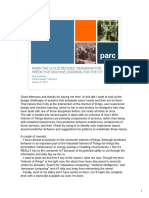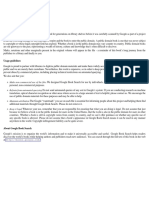0% found this document useful (0 votes)
46 views19 pagesIntroduction To Computer
A computer is an electronic device that can be instructed to carry out sequences of arithmetic or logical operations automatically via computer programming. It has 4 basic functions: taking input, processing data, generating output, and storing data/instructions. The main components of a computer are the central processing unit, motherboard, memory, bios, storage devices, input devices, output devices, and power supply. Computer software includes system software like operating systems and application software.
Uploaded by
Mary Lyn LabanonCopyright
© © All Rights Reserved
We take content rights seriously. If you suspect this is your content, claim it here.
Available Formats
Download as PPTX, PDF, TXT or read online on Scribd
0% found this document useful (0 votes)
46 views19 pagesIntroduction To Computer
A computer is an electronic device that can be instructed to carry out sequences of arithmetic or logical operations automatically via computer programming. It has 4 basic functions: taking input, processing data, generating output, and storing data/instructions. The main components of a computer are the central processing unit, motherboard, memory, bios, storage devices, input devices, output devices, and power supply. Computer software includes system software like operating systems and application software.
Uploaded by
Mary Lyn LabanonCopyright
© © All Rights Reserved
We take content rights seriously. If you suspect this is your content, claim it here.
Available Formats
Download as PPTX, PDF, TXT or read online on Scribd
/ 19
























































































